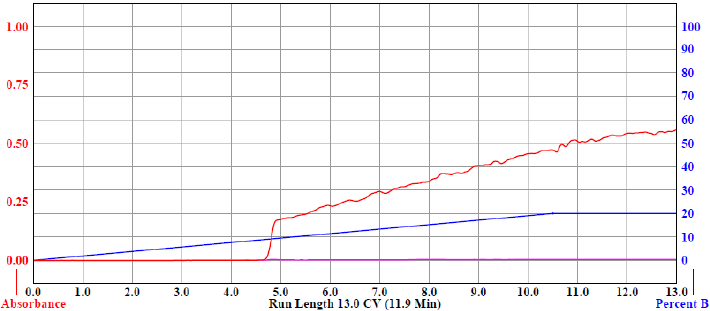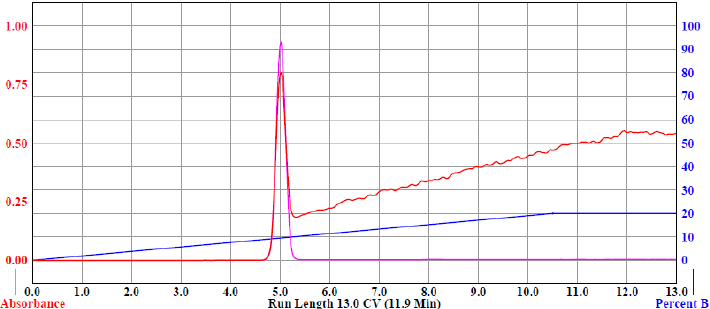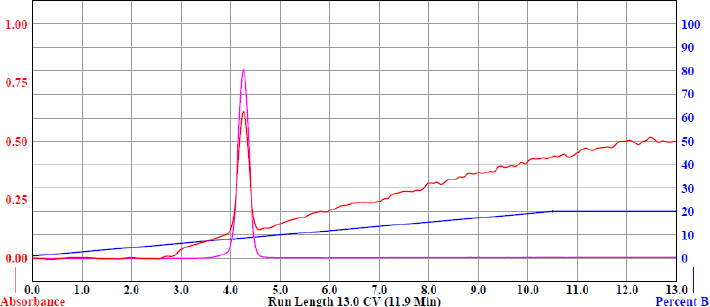It is common to run flash chromatography using the default gradients installed into flash chromatography systems. These gradients usually make a reasonable purification without much effort for method development. However. It is customary for these gradients to start at 0% B solvent (the strong solvent) when running normal phase. The default reverse phase gradients start at 5 to 10% B to avoid phase collapse, and so will not be discussed here. Most compounds elute well with the standard gradients, however compounds which need only a small concentration of B solvent will often elute later than expected and may elute together.
The reason for this is shown in figure 1. No sample was run, and baseline-correction was turned off on the NextGen 300+ to track the solvent adsorption. In this run, the solvent trace failed to follow the gradient. The step in absorbance occurred after the “hot band” eluted from the column.

The observed ”hot band” is nothing more than the heat of adsorption of ethyl acetate onto silica. As the silica is adsorbing all the ethyl acetate, no compound an elute before ~4.7 column volumes (CV). This is analogous to the “solvent demixing” described by Snyder & Kirkland[i].
This proper elution is achieved by starting the run at ~2% B solution, and extending the equilibration to 7 to 10 CV to allow the ethyl acetate to adsorb onto the silica. As an alternative to the long equilibration, one can use manual control to wash the column with 10% B solvent for 4 CV, and equilibrate normally while still starting the gradient at 2% B.


Aside from hexane, dichloromethane/methanol gradients also benefit from starting at a low B concentration. Columns using a small amount of modifier such as triethylamine also benefit from a longer equilibration.